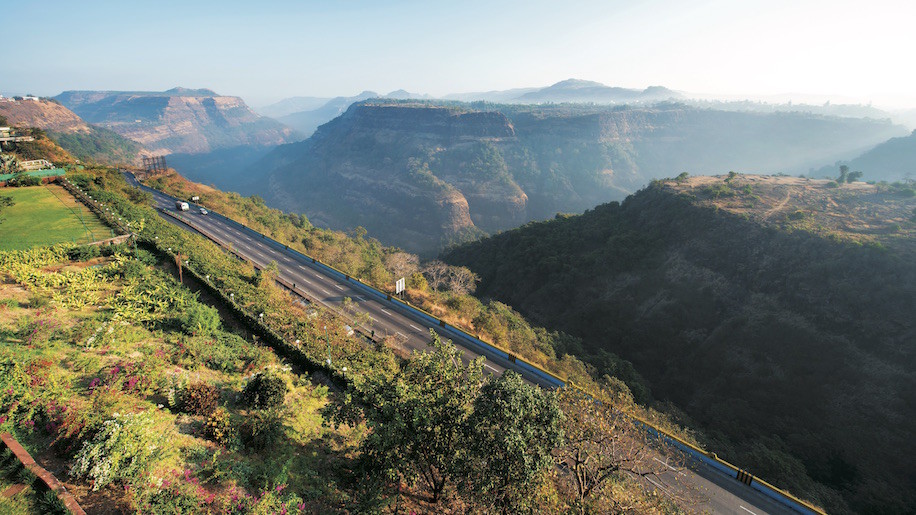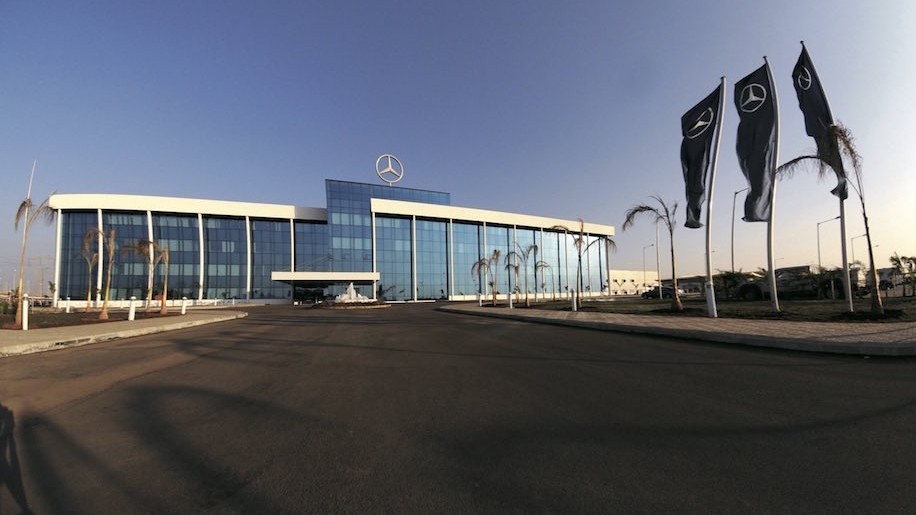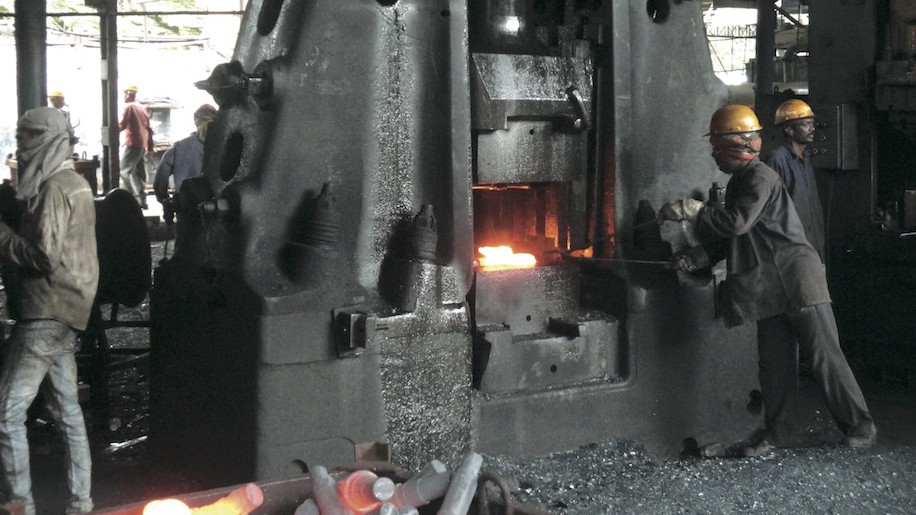
The 94.5 km long Yashwantrao Chavan Mumbai Pune Expressway is India’s first six-lane freeway, connecting Mumbai to Pune. This is the most practical way to reach Pune if you’re already in Mumbai. A number of buses such as Volvo and Shivneri — both air-conditioned — operate from Mumbai’s Dadar Circle, that will drop you to Pune Railway Station in ₹350.
There are other travel options for domestic Indian travellers too. The current Pune airport is well-connected to other parts of the country, with most major Indian airlines like IndiGo, JetAirways, GoAir, SpiceJet and Air India flying into here. For business travellers from overseas, there is
good news; the development of the New Pune International Airport, a₹10 billion project undertaken by the Maharashtra Airport Development Company (MADC), is underway. The current airport only has eight parking bays and is able to accommodate only three to four direct international flights
a day. Of these, there are just two direct flights (to Dubai and Abu Dhabi), and 10 connecting flights (to Beijing, Frankfurt, Amsterdam, Singapore, Zurich, London, Paris, Madrid, Shanghai, Bangkok). A growing hub for IT and the automobile industry, this metropolis is being recognised as an important business destination, making the upcoming international airport a significant requirement.
Pune is essentially more “Maharashtrian” than Mumbai, the reason being its connect with Shivaji, the founder of the Maratha empire in the late sixth century. Since it was the military capital of the infamous British Raj, Pune’s cantonment area (a personal favourite), with its military schools and hospitals, is reflective of the era before India’s independence. Having lived here for a while, the city’s layout is second nature to me. While areas like Camp and Koregaon Park are residential, they are also populated by a number of famous restaurants and cafes. Hinjawadi, Chakan, Magarpatta and Aundh are in the out-skirts and are home to notable IT and automobile companies.
Further, because Pune has only recently developed, it is relatively more green compared with Mumbai. The city has pleasant weather during winters due to its proximity to the mountains, but summers are scorching. The concept of driving is a bit different here; two-wheelers are more common than four-wheelers, and rules are broken more often than followed. The second most populated city in Maharashtra (after Mumbai), with a population of 2.5 million (62 per cent of which are under 30), Pune is known as the “Oxford of the east”, and for good reason. The prestigious Film and Television
Institute of India, Symbiosis International University, University of Pune and Bharti Vidyapeeth University (housing the best school of photography in India) are all situated here. Khadakwasla, in the outskirts of Pune, is home to National Defence Academy, that trains cadets for India’s defence services.The city receives an inflow of students from not only India, but across the world. This is because of two reasons: high standard of education, and the low cost of it. The direct consequence of all of this is talent.
“Pune has developed into a manufacturing centre for many industries like automobiles and chemicals and is the base for auto allied industries, such as forging since the 1950s. The overall economic and demographic canvas of the city offers excellent business potential for the forging industry.”
A number of kids who graduate from Pune choose to stay back and find opportunities in the many booming businesses of the city. The ‘Detroit of India’, the city is well-known for its automobile industry and is home to some of the largest Indian and international heavyweights such as Tata Motors, Mercedes Benz, Bajaj, Volkswagen, Fiat, General Motors and Mahindra & Mahindra. India’s Tata Motors (part of Ratan Tata’s eminent Tata Group), is the largest and the oldest. Established in 1966, the Pune unit of Tata Motors is spread across Pimpri (800 acres) and Chinchwad (130 acres) in Pune. The Mercedes Benz facility followed suit in 2009 and is considered one of the best units of Daimler world. “On June 11, Mercedes-Benz India doubled its production capacity to 20,000 units, as it inaugurated its new production facility in Chakan, Pune. Mercedes-Benz now has the largest installed production facility in the Indian luxury auto sector,” said Mr. Eberhard Kern, Managing Director and CEO, Mercedes-Benz India. Kern attributes the sustained growth of the German auto brand in India to Pune’s satisfying infrastructure and talent pool of skilled workers, engineers and management graduates. “Its strong presence of auto ancillary industry and connectivity to Mumbai’s airport also benefit the functioning of Mercedes Benz,” he adds.
Auto-parts manufacturing companies such as Continental AG, Frost & Sulivan and Visteon are also head-quartered here.

India’s forging industry (estimated at ₹20,200 crores) is the fundamental backbone of its automobile industry. It is no surprise that the Association of Indian Forging Industry (AIFI), established in 1965, is also based in Pune. In a nutshell, AIFI encourages trade promotion, technology up-gradation, collection and dissemination of information for the forging industry. “Pune has developed into a manufacturing centre for many industries like automobiles and chemicals and is the base for auto allied industries, such as forging since the 1950s. The overall economic and demographic canvas of the city offers excellent business potential for the forging industry,” said Mr. Asheet Pasricha, President, Association of Indian Forging Industry (AIFI).
Apart from the automobile industry, Pune also houses a number of mechanical engineering industries that have flourished since the 1960s. Another German bigwig, ThyssenKrupp, finds itself expanding along with the financial landscape of the city. The conglomerate, with 670 companies worldwide and a net-profit of €195 million for the year 2013-2014, has chosen Pune as its home. ThyssenKrupp, India operates in the fields of sugar plant and machinery, open cast mining and bulk material handling systems, cement plant and machinery and steam and power generation plants. “Today, Pune has a diverse industrial population. The township of Pimpri Chinchwad is dotted with over 4,000 manufacturing units, making it the perfect head office for a company like ThyssenKrupp Industries India,” said Mr. Sivasubramanian Natarajan, Managing Director, ThyssenKrupp, India. “Apart from this, proximity to Mumbai, good weather, robust connectivity to the industrial belt in southern India and availability of talent has made Pune the perfect destination for us,” he adds.

The dawn of the early 21st century saw Pune evolve into a hub for technology. A surge of home- grown and international Information Technology companies invested in its software technology
parks that were set up by the Mahratta Chamber of Commerce, Industries and Agriculture (MCCIA). Today, Pune’s IT industry, estimated at US$10 billion, employs more than two lac people across 2,000 companies. Areas such as Hinjawadi (outskirts of Pune) and Magarpatta (satellite township) are home to IT companies such as Wipro technologies, Tata Communication Services, Cognizant and Accenture. Bengaluru based Wipro, India’s global multinational IT consulting and system integrations firm, has a strong presence in Pune. The company has two large campuses here and is growing.
Wipro in Pune services clients across sectors that include: banking and financial services, media and telecommunications, manufacturing and others. “Pune’s well-developed institutional infrastructure and relatively lower costs of setting up, compared to larger metros, make it an ideal location for an
IT hub,” said Mr. Hariprasad Hegde, Senior Vice President and Global Head, Operations, Wipro Ltd.
While the IT and the auto industry have thrived in Pune, medical tourism is currently in its nascent stage. Not as widespread as the industry in Chennai, Pune only has a few but notable hospitals that attract medical tourists. Founded in 1940, Ruby Hall Clinic, with two hospitals in the city, is one that welcomes medical tourists from Iran, Kenya, Nigeria and Oman. The patients usually fly down for kidney treatments, joint replacements and orthopaedic operations. The hospital, recognised as the best one for medical tourism in 2012, prides itself with many innovations in the industry, such as the first Image-Guided Radiation Therapy machine in Asia. Ruby Hall Clinic was also felicitated for its cardiology and critical care department by Dr. APG Abdul Kalam. “There are two reasons why patients from world over choose us: firstly because of the value for money one receives at our hospital, and secondly because of our expertise in technology,” said Mr. Bomi Bhote, CEO, Ruby Hall Clinic. The hospital also offers airport transfers, translators and in- house chefs for their medical tourists from different nationalities.
From the “Detroit of India” to “Oxford of the east”, Pune’s many names reflect its various facets that come together to create a wonderful synergy of talent and industry. There is no doubt that Pune has evolved in the past 50 years. Once just a weekend destination, it is today a powerful industrial hub for domestic and international companies, that are prospering because of the city’s suitable infrastructure and skill.

WHAT TO SEE AND EAT
The peshwas (the rulers of the Maratha dynasty) established Pune as their capital during the 17th century, and pumped in generous revenues, that helped transform it into the cultural capital of Maharashtra. A number of forts, temples, palaces, gardens and peths or areas adorn this metropolis. Seven peths named after days of the week are situated in the old city and are fundamental to Pune. Shaniwarwada, located in Kasba Peth on Shivaji road is an 18th century fortress that was the seat of the peshwa rulers until 1818 and was destroyed in a fire in 1828. The remains of the fort still stand and the surviving structures include a palace, fountain and gates emulating imperial Maratha architecture.
Stroll through peths behind M.G road, and have breakfast at one of many Parsi, Irani and Bohri Muslim bakeries and restaurants in this area such as Persian Bakery and Naaz Bakery. Visit the Aga Khan Palace located on Pune Nagar road in Kalyani Nagar. Built in 1892 by Sultan Muhammed Shah Aga Khan III, this monument is a cultural marvel that holds significance in the country’s Quit India campaign, as Mahatma Gandhi was held prisoner by the British at this very place. The palace houses the Gandhi National Memorial that allows you to take a look at the very room Gandhi stayed in.
Apart from rich Maratha architecture, Pune is also a gourmand’s paradise. For a local experience, eat a traditional Maharashtrian thali (plate with small portions of various dishes) at Sarjaa restaurant in Aundh. Take home chocolate-chip cookies from German Bakery at Koregaon Park and try bhel (a mixture of puffed rice and condiments) at Kalyan Bhel situated at various locations in Pune. Don’t forget to indulge in the Nutella menu at 11 E Street in Camp, a restaurant aesthetically themed around London’s Piccadilly Circus. Malaka Spice (malakaspice.com) for pan-Asian and Darios (darios.in) for Italian are good fine-dining options in Koregaon Park.
WHERE TO STAY
Westin
The very contemporary Westin is a 277 room property in the middle of Koregaon Park. All rooms are fitted with modern amenities, signature Westin Heavenly Beds and overlook views of the Mula Mutha river or greenery. With 1,470 sqm of meeting space, three eateries, one food store and cafe, one lobby lounge and a bar, Westin offers a host of dining and entertainment options to travellers. The hotel also has in infinity pool, gymnasium and spa that also offers in-room treatments. starwoodhotels.com

The Pride Hotel
The Pride Hotels is an Indian home-grown chain with properties across Ahmedabad, Bangalore, Chennai, Kolkata, Nagpur and Pune. The Pride Hotel Pune is a good option for business travellers seeking accommodation near Shivaji Nagar. The property with its 112 guest-rooms and suites is not ultra modern but carries an old-world charm and is decorated in tones of white, brown and beige. The hotel has two restaurants, one bar, and ample meeting space including a conference room, banquet hall and meeting room. Leisure facilities include a spa, health-club and swimming pool. pridehotels.com

Oakwood Premier
Located in Koregaon Park Annex, Oakwood Premier is an all-suite hotel with 200 service apartments equipped with kitchenettes and living areas comfortable for long-stay business travellers. The hotel is located in a quiet area but is still minutes away from the bustling Koregaon Park. It is pet-friendly and
also has two rooms for differently abled individuals. Bistro (Italian restaurant) and Oak-lounge are popular amongst the social circles of Pune. Oakwood also has two board-rooms, a swimming pool, a tennis court, a fairly large gymnasium and the only squash-court in a hotel in Pune. oakwoodasia.com













